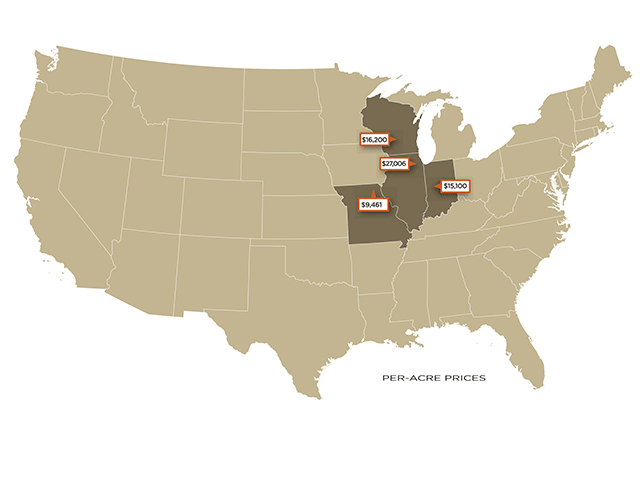Corps Sued Over Miss. River Management
Conservation Groups Allege Mississippi River Floods Caused by River-Training Structures
OMAHA (DTN) -- A recent rash of flooding in the Mississippi River basin could have been avoided had the U.S. Army Corps of Engineers better managed a 195-mile stretch of the river from Cairo, Illinois, to St. Louis, Missouri, a handful of conservation groups allege in a new federal lawsuit filed on Wednesday.
The Mississippi River has experienced a series of historic floods in recent years, clogging up barge traffic, flooding towns and cities, and damaging farm ground along the river.
The lawsuit, filed in the U.S. District Court for the Southern District of Illinois in East St. Louis, Illinois, points to the continued construction of river-training structures as a reason for narrowing river channels in the Middle Mississippi River. River-training structures include dikes, weirs and chevrons, and placement of bank-hardening works known as "revetments."
The lawsuit was filed by the National Wildlife Federation, American Rivers, Prairie Rivers Network, Missouri Coalition for the Environment and Great Rivers Habitat Alliance.
"The scientific community now recognizes that river-training structures increase flood heights and thus the frequency and severity of flooding," the lawsuit said.
The groups claim the Corps of Engineers did not file updated environmental impact statements to include the possible compounding effects on the channel and the surrounding environment of continued construction along the river.
"Between 1986 and 2013, at least 48 studies attributed increasing flood heights to the construction of instream structures, and at least 17 studies between 2000 and 2013 discussed this effect on the Mississippi River specifically," the lawsuit said.
P[L1] D[0x0] M[300x250] OOP[F] ADUNIT[] T[]
Congress established limits on what is called the Regulating Works Project. Once the river was contracted to a width of 2,000 to 2,500 feet, the Corps is required to maintain the navigation channel "only through dredging as needed," the lawsuit contends. The Corps approved the current project in August 2017.
"Congress also expressly rejected more-aggressive contraction plans," the lawsuit said.
"Despite these explicit limitations, since 1934 the Corps has frequently deviated from Congress' direction by implementing an unauthorized and more damaging contraction of 1,800 feet. Since 1974, the Corps has frequently implemented an even more damaging contraction of 1,500 feet upon the unauthorized recommendation of the district engineer."
The groups said the contraction has "resulted in significant additional environmental harm and flood stage increases" than what was authorized by Congress.
"They have placed surrounding communities at greater risk of personal injury and property damage from increased flooding because they narrow, and thus constrain, the river's flow during high water events," the lawsuit said.
The U.S. Army Corps of Engineers did not respond to DTN's request for comment.
The plaintiffs are asking the court for an injunction ordering the Corps to complete an environmental impact study that analyzes the project and another injunction prohibiting the construction of river-training structures until a study is completed.
The Mississippi River watershed drains about 1.2 million square miles, including all or parts of 32 states.
"The Army Corps has opted to continue to recklessly follow a century-old plan that increases the risk of catastrophic floods while destroying vital wildlife habitat," Melissa Samet, senior water resources counsel at the National Wildlife Federation, said in a news statement.
"It is unfortunate that we had to go to court to urge the agency to assess all the risks and evaluate modern approaches. However, last year's flooding shows how critical it is that the Army Corps get this right," Samet said.
The groups said the Corps has built "hundreds of miles" of training structures. Those have increased flood heights by up to 15 feet in some locations and from 6 to 8 feet in stretches of the Middle Mississippi.
The U.S. Department of the Interior has documented 193 species of migratory birds in or around the project area. In addition, about 140 species of fish live in the section of the river, including the endangered pallid sturgeon.
Todd Neeley can be reached at todd.neeley@dtn.com
Follow him on Twitter @toddneeleyDTN
(c) Copyright 2020 DTN, LLC. All rights reserved.




